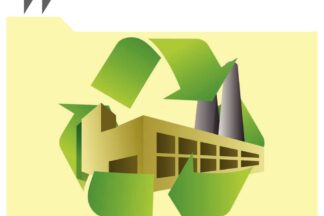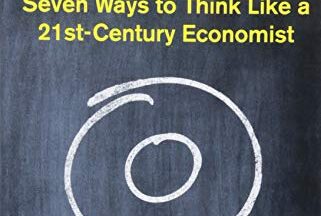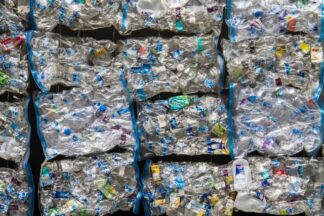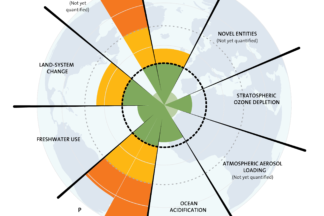With an event targeting the industry. the United Kingdom’s Department for Environment, Food and Rural Affairs (Defra) launched their first Sustainable Action Plan (SCAP) report revealing the data about the extent and impact of the country’s clothing waste.
Prato, a few kilometres outside Florence, Italy, is one of the country’s historic textile districts. With the launch of a range of carbon neutral fabrics the district seems to finally enter a period of experimentation of how to leverage its legacy in a positive way and for its future survival and competitiveness.
ntil the late 80s, fashion retailers and brands would typically have two main collections a year: spring/summer and autumn/winter. Then, in the 90s things changed dramatically. Increased competition saw retailers incentivising customers to visit their stores more frequently.
The second Future Fabrics Expo was hosted at the London College of Fashion on November 7th – 9th 2013, and was attended by a rather large number designers, buyers and students. Roughly 650 fabrics with a reduced environmental impact stemming from around 50 textile mills world-wide, were showcased, along with inspirational and/or interactive videos and information panels.
Dutch design is defined as “minimalist, experimental, innovative, quirky, and humorous”. This sophisticated and open-minded taste, typically northern European, is consistent across product design, architecture and fashion. This article looks at the landscape in the Amsterdam specifically.
The term ‘circular economy’ has recently been – again – converted into a buzz word. To some extent there are a couple of good reasons for that as both common sense as well as the Ellen McArthur foundation's most recent report prove.
Circular economy is the antonym of linear economy. Linear economy has been the dominant industrial model in our history and postulates production is followed by consumption that then ends up with the disposal of used products. As opposed to this, circular economy seeks to rebuild capital, whether this is financial, manufactured, human, social or natural and sees products having a longer or a never-ending life that are either re-used as new inputs to create new products or shared and co-owned by different consumers.
C&A, part of the Cofra Holding that owns C&A Europe, Brazil, Mexico and China, has been a family business since 1841.
The company is quite conservative in communicating corporate responsibility achievements. Their style of communication appears to be more emotional than factual.
The company has been awarded the Textile Exchange Future Shaper award in 2012 recognising the company’s commitment to promoting the analysis and certification of organic cotton and textiles.
The Cradle to Cradle (C2C) idea has been around for a good decade now, longer if we’d track it right back to its inception. The first C2C fabric was developed sometime in the early 2000s, and flies now around the world as upholstery fabric on the A380 Airbus models.
Levi Strauss was the very first apparel brand to establish and publish a code of conduct in its industry in 1991. It was also the very first company to determine global guidelines for water quality standards for their suppliers in 1992.
The Higg Index is an apparel and footwear industry self-assessment standard for assessing environmental and social sustainability throughout the supply chain.
The Higg Index 1.0 was released on June 26, 2012.
The effect of plastics in our oceans has been repeatedly hit in the news over the last few years.
A hazard in two forms: as a plastic in totality; or as a microfiber/micro particle, which also carries chemistry (pollution) into the environment, from the product they started life as. Research to date shows that this pollution cannot be exhaustively blocked through wastewater treatment plants, consequently micro particles are ending up in our global waterways.
Within the EU, legislative requirements have lead to implementation of Extended Producer Responsibility schemes (EPRs) in the following industries so far: packaging, electrical and electronic equipment, batteries and automotive industries.
In this article, we would like to look sidewise, and see what can be learned from the electronic and electrical equipment industry, as they have been ahead of the curve – although not always voluntarily, since the 1995 laws came into place – when it comes to the implementation of EPR.
Wool is slowly recovering some of its former popularity. While for some it is an old acquaintance, for many others in our industry, and in this current time and age, it is a new, or maybe better novel, material for the portfolio. And what about Recycled Wool? This report answers many of the key questions.
Buying outdoor and sports material is not always an easy task – more so, if current equipment has has shared many an adventure.
The following key questions are therefore intended to support you – the sports and outdoor loving shopper – when looking around for a refresh or update of your kit.
Doughnut Economics = An economic system that respects the planetary boundaries as well as the societal attributes of welfare. To create an economic system that works for the humans and the environment around us.
The cat is – long-time coming - finally left out of the bag: while drawing up a Covid19 recovery package, EU legislators have decided to introduce a levy on non-recycled plastic as per 1st of January 2020. Reading through the text, two points offer a considerable surprise: The short notice, the wording, and the focus on packaging.
But how come that legislators seem to drive the industry R&D agenda? Here a few questions for boards to ask their CEOs to get to the bottom of this.
Over the last 12 months, the Doughnut Economics Action lab developed a methodology – denominated ‘Creating City Portraits’ - , tested in three different cities of the global North. So the question is: Could the methodology work for business too? The answer: Yes in principle. But commitment is at the heart of it.
There are two approaches on how we can define of what is viable and desirable for our global economy.
In one, the 'soft attributes' and non-physical factors such as consumer desires, lifestyles or distribution of goods are a fixed attribute. In the other, quantifiable, physical attributes - amongst them natural resources - are fixed.
The challenge of boards in this time and age: Recognising that the first - the present - is failing. And outlining the path towards the second.
Overconsumption or ‘simply’ consumption?
Fair resource use, or resource depletion?
Fair share, equal share or acquired share of resources?
Those are questions that pop up when the Planetary Boundaries are being discussed.
“Is Europe living within the limits of our planet?: An assessment of Europe's environmental footprints in relation to planetary boundaries”, published in April 2020 does exactly that: it evaluates and calculates the European performance for planetary boundaries by taking a consumption-based (footprint-based) perspective. This is turn is interesting as it relates environmental pressures to final demands for goods and services.
And the results are ... shall we say: a stark call to action.









